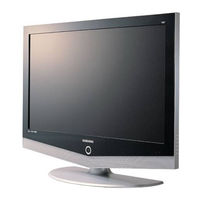Samsung LN-R328W - 32" LCD TV Manuals
Manuals and User Guides for Samsung LN-R328W - 32" LCD TV. We have 10 Samsung LN-R328W - 32" LCD TV manuals available for free PDF download: Owner's Instructions Manual, Manual De Instrucciones, Quick Setup Manual
Samsung LN-R328W - 32" LCD TV Owner's Instructions Manual (258 pages)
TFT-LCD Television
Table of Contents
Advertisement
Samsung LN-R328W - 32" LCD TV Owner's Instructions Manual (88 pages)
TFT-LCD Television
Table of Contents
Advertisement
Samsung LN-R328W - 32" LCD TV Quick Setup Manual (8 pages)
Samsung Flat Panel Television User Manual
(Spanish) Samsung LN-R328W - 32" LCD TV Manual De Instrucciones (88 pages)
TELEVISOR TFT-LCD
Table of Contents
(Spanish) Samsung LN-R328W - 32" LCD TV Manual De Instrucciones (88 pages)
User Manual (user Manual) (ver.1.0) (Spanish)
Table of Contents
Advertisement









